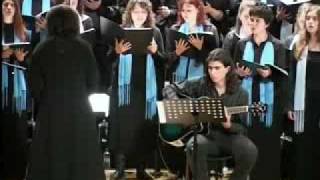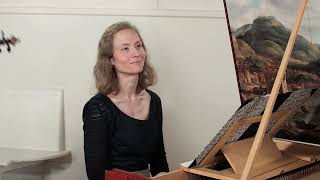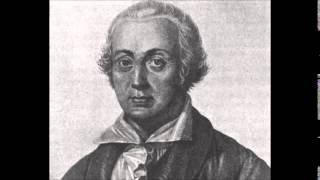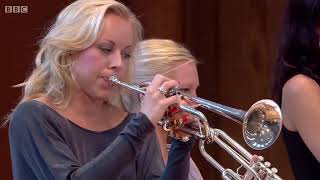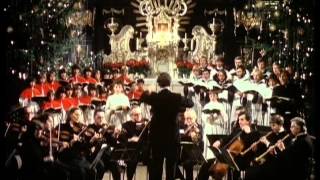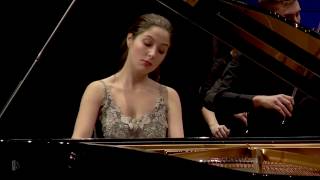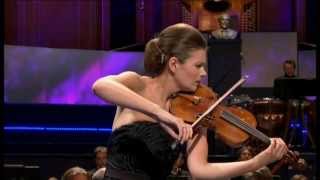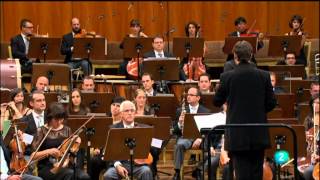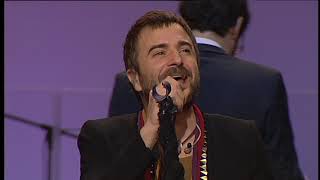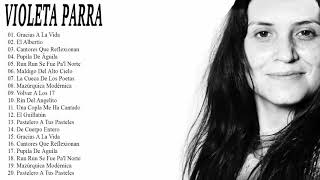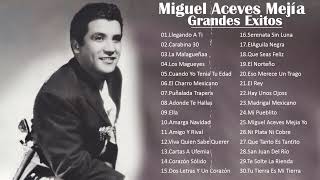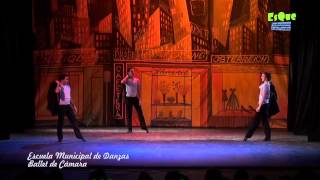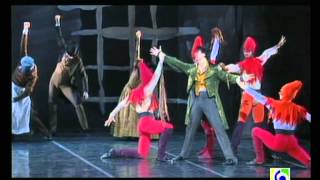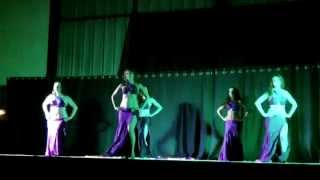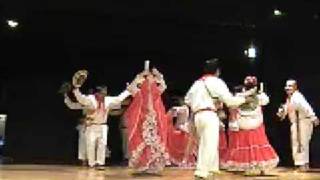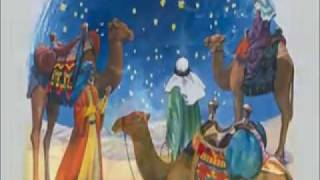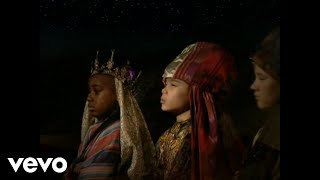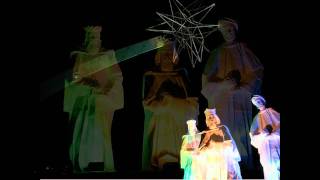January 6th is celebrated as Three Kings Day
Recommended music videos for initiation to classical music
Ariel Ramírez (1921-2010) is one of the most important figures of Argentine nativism. He studied piano and composition, and at the age of 20, encouraged by Atahualpa Yupanqui , he travelled throughout the country, making contact with the different musical expressions of each region. Nine years later he made a four-year trip through Europe offering various concerts of music from his land; on his return to Argentina he formed a company made up of musicians and dancers with which he would tour the country for 20 years; after this stage he performed as a piano soloist in countless recitals in which he interspersed his own works. He wrote numerous songs and works among which the world-famous Misa Criolla stands out.
Our Christmas is a cantata with lyrics by Félix Luna and music by Ariel Ramírez structured in six scenes or musical movements, of which today we offer the fifth, The Three Wise Men , performed by the Choir of the Experimental Secondary School of the University of Macedonia .
Christoph Graupner (1683 - 1760) was a prolific German composer, renowned for the excellent calligraphy of his autographs and copies. Graupner completed his studies in Leipzig with Johann Kuhnau (1660-1722), Bach 's predecessor at St. Thomas Church . In 1705 he took up a position as harpsichordist in the orchestra of the Hamburg Opera , where Handel was a violinist. In 1709 he accepted a position at the court of Hesse-Darmstadt , becoming its conductor and composer in 1711. Graupner was one of the most esteemed composers of his time, like his contemporaries Handel, Telemann and Bach. He was a lively, passionate, cultured man with great professional experience, which endowed his compositions with an outstanding level of invention and originality.
His works are catalogued with the initials GWV (Graupner Werke-Verzeichnis); Werke in German means "work" and Verzeichnis, "catalogue".
The viola d'amore is a baroque bowed string instrument belonging to the viol family. It has fourteen strings, although only seven of them are played, the other seven causing a resonance effect by sympathetic vibration; in the past they were tuned in a variety of ways, apparently depending on the work, with neither composers nor musicians reaching an agreement until a famous French player of this instrument, Chrétien Urban (1790-1845), in the 19th century , fixed the tuning.
Today we offer the Chaconne from the Ouverture for viola d'amore GWV 460 performed by the Basel-based Ensemble Der Musikalische Garten where the role of viola d'amore is played by the cello.
Domenico Cimarosa (1749-1801) was an Italian composer born near Naples . As a child he entered the Musical Institute of Santa Maria di Loreto where he remained for eleven years. At the age of 23 he presented his first work, a comic opera entitled Le Stravaganze del Conte , which was well-deservedly accepted: after it came other similar works that led him to live in Rome, Naples and Florence where he composed comic and serious operas, cantatas and sacred compositions. In 1787 the Empress Catherine II invited him to Saint Petersburg , where he wrote numerous short works. At the invitation of Leopold II , he moved to Vienna where he wrote his masterpiece, the comic opera Il Matrimonio segreto and other works, all of them celebrated with great success. He died in the Austrian capital in 1801.
The Sonata was originally a composition written to be played or "sounded" by one or more musical instruments, just as the cantata was to be "sung" by one or more voices. Since the classicism (1750-1810) its definition is adjusted to a work generally structured in three movements (fast-slow-fast) and sometimes four, with or without a short introduction. It should not be confused with the sonata form , which is a compositional model consisting of three uninterrupted sections: a) exposition, b) development, c) reexposition. The sonata form is normally applied to the first movements of sonatas, quartets, symphonies and concertos .
Today French pianist Roberte Mamou offers us a collection of 32 piano sonatas by Cimarosa .
Tine Thing Helseth (1987) is a Norwegian trumpeter specialising in classical repertoire. Born in Oslo , she began playing the trumpet at the age of seven; her teachers included Heidi Johanessen and, since 2002, Arnulf Naur Nilsen .
She has formed a brass group with nine other friends and colleagues as a way of actively enjoying her instrumental family (brass) and at the same time claiming and demonstrating her ability with these instruments, usually and mostly played by men: three trumpets, a flugelhorn, a horn, four trombones and a tuba.
These are the members of tenThing Brass Ensemble who today offer us the Proms Chamber Music recital with works by the French Georges Bizet (0´37´´), the German Kurt Weill (6´48´´), the Argentine Astor Piazzola (17´46´´) and the Norwegian Edvard Grieg (22´05´´).
Recommended classical music videos
Johann Sebastian Bach (1685-1750) Today we meet one of the three giants of Western music along with Mozart and Beethoven . He was a German violinist, organist, conductor and composer, born in Eisenach into the most prominent musical family in history. In 1703 he got his first job in Arndstat and in 1707 he moved to Mülhausen as an organist, where he married his cousin Maria Barbara with whom he had seven children. After the death of his wife in 1720, after a year and a half of widowhood, he married again to Maria Magdalena with whom he would have another thirteen children. In 1723 he moved to Leipzig where he would reside until his death at the age of 65. His influence has been notable on Haydn , Mozart , Beethoven , Mendelssohn , Schumann , Chopin ... and many other renowned composers.
The catalogue of Bach's works or Bach-Werke-Verzeichnis , better known by its initials BWV , consists of a numbered index of all the composer's works arranged thematically by type of work or genre and according to their vocal or instrumental nature and used by scholars and musicians around the world. This catalogue was created in 1950 by the German musicologist Wolfgang Schmieder .
An oratorio is a dramatic musical genre, unlike an opera , without staging, costumes or sets. Generally composed for solo voices, choir and symphony orchestra, sometimes with a narrator, its subject matter is frequently religious (stories from the Bible or the Gospel , from the life of Jesus or the lives of saints, etc.), but can also be secular (mythological heroes, historical themes, a hymn to nature, etc.). Its main characteristics are generally: A) A general structure in several parts, frequently three, (eventually preceded by an instrumental prelude). B) The presence of a narrator (external to the action or identified with a character). C) The alternation between the sung parts of arias and recitatives.
The Christmas Oratorio is composed of six cantatas to be performed on different days of the Christmas holidays: 1. The Nativity (December 25). 2. The Announcement to the Shepherds (December 26). 3. The Adoration of the Shepherds (December 27). 4. The Circumcision and Baptism of Jesus (January 1). 5. The Journey of the Magi (the first Sunday in January). 6. The Adoration of the Magi (January 6). Despite this, it is usually presented as a single whole or as two sets: cantatas 1, 2 and 3 on the one hand and cantatas 4, 5 and 6 on the other.
Today we offer the set of the last three cantatas (IV: 0´25´´.-. V: 25´22´´.-. VI: 49´24´´) conducted by Nikolaus Harnoncourt (1929-2016), an Austrian conductor specialized in baroque and classical music, and a pioneer in the interpretation of his works with period instruments and in the application of objective and historicist musicological criteria.
Ludwig van Beethoven (1770-1827) was one of the giants of Western music along with Bach and Mozart . Born on 16 December 1770 in Bonn , his father, of Flemish origin, tried to present him as a second Mozart , although it was a notable failure. Despite this, from the age of nine the organist Christian Gottlob Neefe captivated him with the study of Bach , whom he would always keep in mind. In 1787 he moved to Vienna with the intention of receiving classes from Mozart , but the death of his mother brought him back to Bonn a few days later. And so after five years, he returned to Vienna where he was able to study with Haydn and Salieri . However, his profession as an excellent pianist could not be realized due to the deafness that attacked him the following year, leaving him totally incapacitated in this faculty.
The catalogue of Beethoven's works . There are 138 musical works composed by Beethoven , arranged by numbers known as opus (Latin for "work") or its abbreviation op. , assigned by the composer's publishers during his lifetime. In addition, there are another 205 works that do not have opus numbers and that were published after the composer's death. These works were assigned WoO numbers (Werke ohne Opuszahl, "works without opus numbers"). This catalogue was first compiled by Georg Kinsky and Hans Halm (Das Werk Beethovens) in 1955.
The Piano Concerto No. 5 in E flat major, Op. 73, popularly known as the "Emperor", was Beethoven 's last piano concerto. It was written between 1809 and 1811 in Vienna and is dedicated to Rudolf of Austria , Beethoven 's protector and pupil. It was premiered on 28 November 1811 at the Gewandhaus in Leipzig . The nickname "Emperor" was not assigned by Beethoven himself but by Johann Baptist Cramer , the concerto's English publisher.
Structure The concerto is divided into the three traditional concerto movements: I (0´28´´) ALLEGRO. As in all of Beethoven 's piano concertos, the first movement is particularly long. In the introduction the orchestra plays three chords, each followed by a short cadenza , of an improvisatory nature but written in the score. The whole is written in sonata form, with three themes, and begins with the particular introduction. The first two themes are introduced by the orchestra in the exposition, but at the end of the second exposition the piano presents a virtuoso and triumphant third theme. The coda of the movement is particularly long and complex. - II (20´46´´) ADAGIO UN POCO MOSSO The second movement is highly lyrical, and is undoubtedly the best known of the three movements. The theme is introduced by the orchestra, followed by the piano exposition. The theme is repeated three times with different variations. The coda ends by slowly introducing the main theme of the third movement - III (28´03´´) RONDO - ALLEGRO MA NON TROPPO. The third movement follows the second uninterruptedly and is a typical Italian rondo, in the form ( A B A C A B A ). The main theme is played by the piano and then responded to by the orchestra. Scales on the piano introduce the second theme, which is also responded to by the orchestra. In the much longer C section, the A theme is presented in three different keys.
Alina Elena Bercu (1990) is a Romanian concert pianist. She began her first piano lessons at the age of 7 at the School of Arts in her hometown of Campina and at the age of 9 she gave her first concert with an orchestra, soon performing on important stages in Europe, America and Asia . She has given more than 200 concerts with renowned orchestras and made recordings for various European radio stations.
Benjamin Britten (1913-1976) was a British pianist, conductor and composer who showed great musical talent from a very young age and at the age of 14 began taking private lessons with Frank Bridge ; later with Ralph Vaughan Williams . At the beginning of the Second World War he moved to the USA where he wrote various orchestral and lyrical works; at the end of the war he returned to London by ship where he wrote several choral works. In 1945 he premiered his opera Peter Grimes with memorable success; although his greatest success came with his War Requiem , a work that was intended to be a rejection of all types of war conflicts. Criticized for his active pacifism and his homosexuality, he is nevertheless considered one of the most emblematic English composers of the 20th century .
Catalogue of Britten's works . His works are classified by their Opus number (from Latin opus 'work'; op. abbreviation) which is a term used in music to catalogue the works of most composers since the 17th century .
Benjamin Britten's Violin Concerto, Op. 15, was written between 1938 and 1939 and dedicated to Henry Boys , his former teacher at the Royal College of Music . Britten worked on it while with Aaron Copland and completed it in Quebec . It was premiered in New York on 29 March 1940 by the Spanish violinist Antonio Brosa with the New York Philharmonic conducted by John Barbirolli . A year after its first performance the concerto was given for the first time in England at the Queen's Hall on 6 April 1941. It was conducted by Basil Cameron and the soloist was Thomas Matthews , leader of the London Philharmonic Orchestra . Its first performance with the BBC Orchestra , it was broadcast on 28 April 1941 conducted by Clarence Raybould with Thomas Matthews as soloist.
Structure . The concerto is written in three movements: I (0´00´´) MODERATO CON MOTO. The work opens with a series of timpani strokes, perhaps reminiscent of Beethoven's 1806 Violin Concerto . The rhythm is taken up by the bassoon and other instruments, persisting as an ostinato throughout the work. The violin enters with a song-like lament, soaring above the orchestra. The music is soon interrupted by a more militaristic, percussive secondary theme. II (9´58´´) VIVACE. The second movement, presented as a wild moto perpetuo scherzo , is unmistakably reminiscent of Prokofiev . The movement culminates in a stunning cadenza (15´55´´) which, while recalling musical material from both the first and second movements, acts as a direct organic link to the finale. III (19´16´´) PASSACAGLIA. ANDANTE LENTO As a finale, Britten uses a passacaglia: a set of variations on a ground bass, in the tradition of the baroque chaconnes of Purcell and Bach . The tonally unstable bass is initially introduced by the trombone, while the violin recalls its lyrical theme from the first movement. Individual variations develop, taking on characters of song, dance, caprice and march. At the end, the fundamental bass is reduced to chant-like reminiscences; the orchestra hints at an unmistakable D major chord, while the soloist remains indecisively on a trill between the notes F natural and G flat.
Today we are treated to a performance by German violinist Carolin Widmann accompanied by the Sinfonieorchester – Frankfurt Radio Symphony conducted by American maestro Hugh Wolff .
Carmelo Alonso Bernaola (1929-2002) was a Basque composer, music teacher and clarinetist, considered one of the greatest exponents of Spanish music in the second half of the 20th century . Throughout his career he composed more than 300 works including classical music, popular songs such as the Anthem of Athletic Club , and numerous soundtracks for film and television. He was a clarinetist in the Municipal Band of Madrid , a harmony teacher at the Conservatory of Madrid and director of the Jesús Guridi Conservatory of Music in Vitoria from 1981 to 1991. His honours include two National Music Awards, the Gold Medal for Merit in the Fine Arts and his entry into the Music Section of the Royal Academy of Fine Arts of San Fernando.
Symphony No. 2 was commissioned by Radio Nacional de España to celebrate Carmelo Bernaola 's fiftieth birthday. It was meant to be a page of maturity and it has turned out to be the work of a master. The three performances, to enthusiastic applause by the composer from Otxandiano, clearly show that the proposed goal has been achieved: to connect with the general public without giving up current thinking in its radical substantiality. Four movements (linked by the intervention of a string sextet located in the distance) give us a succession of images and sound events that are extraordinarily beautiful through a prodigious orchestral imagination and within proportions so precisely calibrated that we receive the sensation that not a single note is missing or superfluous. (Extracted from an article by Enrique Franco in El País)
Today's version is offered to us by the RTVE Symphony under the baton of the Levantine maestro Jordi Bernàcer Valdés (Alcoy, November 5, 1976).
Recommended music videos for all tastes
Anna Maria Jopek (1970) is a Polish singer-songwriter and pianist, who graduated in Philosophy from the University of Warsaw . Jopek is considered the best Polish jazz singer of today and one of the most influential European voices in this genre. Educated at the Chopin Academy of Music in Warsaw and then at the Jazz Department of the Manhattan School of Music , she rose to fame thanks to her participation in the 1997 Eurovision Song Contest with the song Ale Jestem .
Ken Zazpi is a Basque pop-rock band formed in 1996 in Gernika (Bizkaia). They sing mainly in Basque, although they have also covered some of their songs in Catalan. In 1996 they released the song Bi eta bat and that same year they recorded a demo in Muxika (Bizkaia) with the help of guitarist José Alberto Bátiz (then in Fito & Fitipaldis). Their acoustic album, Gelditu denbora ("Stop time") took them on a concert tour through the Basque Autonomous Community, Navarre and Catalonia . Today we propose the concert offered at the Euskalduna Palace in Bilbao on December 5, 2013 accompanied by the Euskadi Symphony under the baton of maestro Fernando Velázquez .
Violeta Parra (1917-1967) was a Chilean artist, recognized as one of the main folklorists in South America and a promoter of popular music in her country. Her contribution to Chilean art is considered of great value and significance; her work served as inspiration to several later artists, who continued with her task of rescuing the music of the Chilean countryside and the constituent manifestations of the folklore of Chile and Latin America . Her songs have been covered by various artists, both Chilean and foreign. In commemoration of her birth, October 4 is celebrated as the Day of Chilean Music and Musicians .
Miguel Aceves Mejía was a Mexican singer and actor; he was born on December 13, 1915 in Chihuahua , son of Miguel Aceves and Herminia Mejía . Since he was a child he worked as a shoeshine boy and selling newspapers, since his father died when he was four years old. His first performances were in his hometown, as well as in Monterrey , and later in Los Angeles , where he recorded his first album, with the trio Los Porteños . Despite the immediate success he had in Los Angeles , he told his companions that his dream was to return to Mexico . There he formed every morning from 7 a.m. to wait for an opportunity until Fernando Fernández introduced him to a program when one of the singers fell ill.
His talent and interpretive style opened the doors to success, as evidenced by the more than two thousand songs he recorded and consecrated him as the King of Falsetto . His popularity led him to venture into the cinema. After appearing in ten films, in 1954 he made his star debut in the film A los cuatro vientos , alongside Rosita Quintana . Miguel and Rosita were so well received as a couple that the producers decided to reunite them in other films. On November 6, 2006, Mejía died in Mexico City at the age of 90, due to pneumonia.
Recommended peculiar videos
George Gershwin (1898 –1937) was an American composer appreciated for having known how to combine jazz with classical music . From a young age he began to write his first songs and even premiered his first musical on Broadway with his brother Ira as lyricist, a company that he would never abandon. From the age of twenty he began to compose works conceived for concert halls with which he achieved renowned successes. Aware of his formal deficiencies, he traveled to Paris to complete his training with Stravinsky , who after asking him how much money he had earned in a year, replied that it was he who should take classes with Gershwin . Something similar happened with Ravel , who snapped at him: “Why do you want to be a second-rate Ravel , when you can be a first-rate Gershwin ?”
Hector Berlioz (1803-1869) was a French composer, a leading figure in programmatic music (music that follows a plot) and in Romanticism in general. His father, a doctor, sent him to Paris to study medicine, which he did not like; so he abandoned medicine and enrolled in the Paris Conservatory where he studied composition. From here he went to Rome where he received a scholarship to study Italian opera. He wrote several operas, symphonies, overtures, various songs and choral works. In 1830 he wrote the Symphonie Fantastique, his best-known work, of which we suggest today the choreography of the fourth movement, The March to the Gallows.
The troupe of dancers " Amirat el Sahara " ( the Princesses of the Desert in Egyptian) was created by Jala and is made up of amateur dancers with diverse and complementary training and personalities. " Amirat el Sahara " offers refined and elegant shows that will delight the spectators. A variety of paintings are offered: oriental classic, oriental fusion, oriental polynesian fusion, khaleeji, saidi, baladi, veils, isis wings, candles, veil fans...
Cumbia is a traditional Colombian musical rhythm and folk dance. It has contents from three cultural sources: indigenous, African and, to a lesser extent, white (Spanish), the result of the long fusion between these cultures. The music features drums of African origin; maracas, guache and pitos (millet cane and bagpipes) of indigenous origin; while the songs and verses are a contribution from Spanish poetry. As for the dance, it is worth highlighting the presence of sensual, gallant and seductive movements, characteristic of dances of African origin. The clothing has clear Spanish features: long skirts, lace, sequins, candongas and the same flower headdresses and intense makeup on the women; white shirt and pants, red scarf tied around the neck and hat on the men.
Recommended music videos for children
Various Wikipedia articles have been used to write these texts.
The texts of Videomusicalis are written in Basque, Spanish and English.





